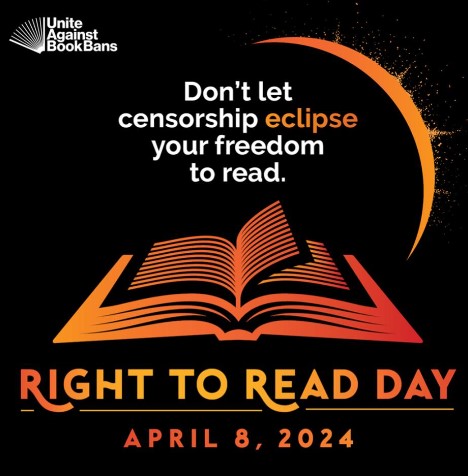
Mary MacIntire
Staff Writer
What’s Up With Banning Books?
This week is National Library Week, which celebrates all aspects of libraries and what they offer communities. Monday, April 8 is Right to Read Day, which is a day of action to support everyone’s right to read.
It is also when the American Library Association releases the top 10 Most Challenged Books of the previous year. Aside from this list, the ALA released new statistics on challenged books from 2023, and the numbers have skyrocketed since 2022.
Libraries have always faced challenges with patrons, parents and the law. Recently issues have been arising in schools and libraries across America about banning books that are seen as inappropriate for children; however, many of these bans seem to target more marginalized groups and authors. Since 2022, the ALA has reported a 92 percent increase in books being targeted for censorship in public libraries. They reported an 11 percent increase in school libraries as well. The ALA’s Office of Intellectual Freedom is responsible for these reports, and it is intellectual freedom that all libraries are now fighting to protect.
“Each demand to ban a book is a demand to deny each person’s constitutionally protected right to choose and read books that raise important issues and lift up the voices of those who are often silenced,” said Deborah Caldwell-Stone, the director of ALA’s Office for Intellectual Freedom, in a news release. Parents and larger parent groups are the ones targeting over 1,000 titles in the last year. Groups such as Parents Defending Education, Moms 4 Liberty, Turning Point USA and The Eagle Forum support conservative values and often look to ban books from schools that they believe are forcing other agendas onto their children.
Part of the ALA’s mission is to ensure access to information for all. The bans being proposed by parents and legislators completely go against this mission. Many also argue that this kind of censorship goes against people’s constitutional rights, specifically the First Amendment.
“The reports from librarians and educators in the field make it clear that the organized campaigns to ban books aren’t over, and that we must all stand together to preserve our right to choose what we read,” says Caldwell-Stone. Just as these non-profits and grassroots are attempting to take away the right to read, there are other organizations such as the ALA who are fighting to protect these rights for children. In some cases, the concerns of parents lead to legal action. This is so with Senate Bill 7, which was passed in Pennsylvania last fall. Many see this bill as censorship and opposing the libraries’ mission.
In the Kemp Library, there is a display dedicated to titles featuring diverse stories and subjects. While censorship is not a big issue on campus, it affects all students and teachers alike. Recent concerns could mean further changes to libraries in the future.
The ALA heavily denounces the banning of books, and they continue to promote the right to read for all people. The organization regularly posts news about challenged books and resources for citizens to fight against attempts at censorship in libraries.

